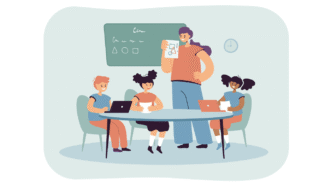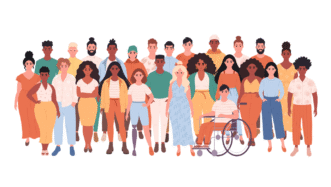LESSON OVERVIEW
The main objectives of this speaking lesson on free speech are to:
- discuss free speech and the ethics of censorship;
- watch and discuss a video about different perspectives on freedom of speech;
- talk about the impact of controversial statements.
In this lesson, students talk about free speech considering different perspectives. They learn the definitions of ‘free speech’ and ‘hate speech’ and discuss their opinions on the impact of free speech, hate speech laws, and censorship. Students also watch part of a video (4 minutes) about freedom of speech, talk about their viewpoints on the topic and discuss the consequences of provocative statements in different scenarios.
C2 / Proficiency45 min
60 minSpeaking ClassUnlimited Plan
This is a Speaking Class worksheet. It includes a variety of tasks that let your students practise their speaking skills. This lesson format does not focus on grammar or vocabulary. Learn more about it here.
WARM-UP AND VIDEO
This speaking lesson on free speech begins with a warm-up where students read a quote about free speech and discuss its meaning. Then, they state whether they agree with it and explain their answer. Following that, students look at the definitions of ‘free speech’ and ‘hate speech’ and discuss questions about their opinions on those definitions and their application. Afterwards, they watch part of a video in which three speakers discuss freedom of speech showing different perspectives. Students explain which viewpoint resonates with them most. Then, they choose viewpoints about the impact of free speech, hate speech laws, and censorship (e.g. Polarization is/isn’t the result of free speech.), complete them and provide details about their answer.
DISCUSSION
In this part of the speaking lesson on free speech, students look at examples of censorship (e.g. cutting books out of school curriculums, banning religious symbols from workplaces, etc.) and discuss questions about the effects and ethics of censorship. Then, they do a task in which they read different scenarios (e.g. A corporation fires an employee for expressing xenophobic views outside the workplace.). They answer questions on the impact of controversial statements, consequences for public figures, personal reactions to differing views, and workplace speech regulations.
Subscribe to unlock these and many other Standalone lesson lesson plans with the Unlimited planWORKSHEETS














hate speech is just heresy against the progressive materialist religion
Yeah, science dictated by whatever the government and billionaires is claiming at the time.
Free speech aims to express ideas, even unpopular ones. Hate speech seeks to dehumanize and attack.
In the UK, data and statistics are considered hate speech
I am simply speechless! this class is outstanding!
Thank you so much, Adriana! What a lovely comment 🙂
Please don’t use this video still on the lesson page with a Swastika on it. I know that’s the point of the class, but its use is offensive to many people.
I agree. Just replace it with a photo of Donald Trump and you will accomplish the same aim. The future Hater in Chief if he gets elected again.
The idea that Trump is a nazi is genuinely hilarious. People are so deluded.
Hi! Thanks for your comment and we see your point. However, the video thumbnail is chosen by the YouTube channel that created the video, so we can’t change it. Also, it’s important to remember that the video doesn’t promote the symbol – it’s made with educational and journalistic intent. Additionally, we ask students to watch the first 4 minutes of the video and the symbol doesn’t appear there and it’s not mentioned either there or in the lesson.
this is a very weak editorial stance!
Oh no, seeing an offensive symbol? How could anyone survive such a thing?
shame about the swastika on the video page – this is banned/illegal in some countries, so essential to find a workaround for the thumbnail